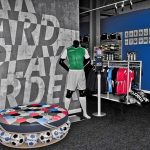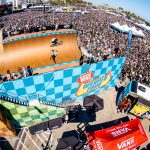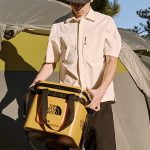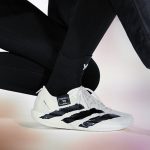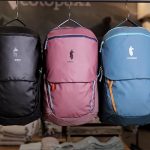Xponential Fitness, Inc. saw its XPOF shares fall more than 20 percent overnight after the company missed revenue targets, lowered guidance and posted a loss for the 2024 second quarter. It was not the best welcome for newly minted CEO Mark King as he made his way back to the sports & fitness market as the key guy to turn things around at the fitness company. King, the long-time TaylorMade and Adidas veteran, most recently ran Taco Bell. He was also recently tapped by Big3, the global 3-on-3 basketball league founded by Ice Cube and Jeff Kwatinetz, as chairman of the Board of Directors.
The Xponential Fitness conference call with analysts was King’s first with the company and the majority of commentary was handled by the company’s CFO.
Total revenue decreased $0.8 million, or 1 percent, to $76.5 million, down from $77.3 million in the prior-year period. The decrease was reportedly due primarily to a $6.5 million decrease in other service revenue, largely attributable to the company’s strategic shift away from company-owned transition studios.
“While we had hoped this wouldn’t be the case, we are confronted with a reality where the business is facing some short-term disruptions from our change in leadership and continued regulatory uncertainty,” said John Meloun, CFO, Xponential Fitness, Inc.
“In addition to some distractions at our senior leadership level that followed the resignation of our former CEO, we are also level-setting how we operate more broadly under new leadership. We are excited about the long-term opportunity all this represents, but we will have to work through some shorter-term challenges as we transition away from a founder-led organization,” Meloun continued. “Both the weaker second quarter results and the reduced guidance for the year should be considered in that context. Importantly, with regards to the second quarter, while some specific headwinds pressured our top and bottom lines in Q2, which I will detail shortly, the core studio operating KPIs that we use to measure the strength of the franchise system remain strong, including total member growth, total visits, as well as run rate AUVs, which have all achieved new historical levels.
Meloun reported that the North America run rate average unit volumes (AUV) of $638,000 in the second quarter increased 10 percent from $581,000 in the prior-year Q2 period.
“AUV growth continues to be driven by a higher number of actively paying members and the continued favorable trend of proportionate studio openings coming from our scale brands that generate high levels of sales,” Meloun noted. “The improvement from mix can be attributed to the growth in our higher AUV brands like Club Pilates and StretchLab and further attributed to the recent optimization of the brands in our portfolio. Over the past eight months, we have acquired Lindora, and we have divested Row House and Stride as we aim to own brands that best fit Xponential Fitness’ long-term growth goals.”
The CFO also reported the that the company is winding down of its AKT brand, with completion expected in the third quarter of this year. At the end of the second quarter, AKT had eight open studios and was not a significant contributor to revenue and EBITDA and is not expected to have a material impact on XPOF’s financials.
“Further, we will not be pursuing the KINRGY rebranding partnership for AKT, as we instead will focus our resources on our remaining brands.”
Xponential Fitness ended the quarter with 3,102 global open studios, opening 108 gross new studios during Q2, with 89 in North America and 19 internationally. There were 85 studio closures in the period. The company previously shifted its strategy regarding studio closures and are no longer taking on any company-owned studios.
“Rather, we are concentrating resources on helping franchisees identify and resolve issues as early as possible to improve operations and their success within our system,” Meloun explained. “As a reminder, we are estimating normal annual closures in the range of 3 percent to 5 percent of the global system, but we expect closures to come in toward the higher end of the range this year.”
The company sold 87 licenses globally in the second quarter, which reportedly trended lower due to approval delays in its annual franchise disclosure renewal cycle, in addition to elevated concerns in the franchise sales process around ongoing regulatory scrutiny.
“Despite these hurdles, which we believe will normalize over time, we still have over 1,800 licenses sold and contractually obligated to open in North America, plus an additional over 1,000 master franchise obligations internationally,” Meloun noted. “This backlog of already sold licenses at our current rate represents over five years of future studio openings globally.”
On the international front, the company executed a new master franchise agreement for its BFT brand in Scandinavia. The growth expectations for Scandinavia were said to be 30 studios over the next 10 years.
Second quarter North America systemwide sales of $421.5 million were up 24 percent year-over-year, with growth said to be driven primarily by the 7 percent same-store sales increase within the existing base of open studios, coupled with growth from new studio openings.
Meloun said roughly 95 percent of the system-wide sales growth came from volume or new members, which he said has remained consistent with historical performance, and approximately 5 percent came from price.
“Seventy-three percent of the revenue for the quarter was recurring, which is defined as including all revenue streams, except for franchise territory revenues and equipment revenues, given these materially occur upfront before a studio opens,” explained Meloun.
Franchise revenue was $43 million, up 22 percent year-over-year. The growth was said to be primarily driven by higher royalties generated by the increase in system-wide sales on a larger base of operating studios and healthy same-store sales growth. In the quarter, XPOF also recognized favorable franchise territory revenues driven primarily by the terminated licenses from the Row House brand.
Equipment revenue was $12.9 million, down 10 percent year over year. With installation volumes materially the same year-over-year, the decrease in revenue was reportedly driven by a higher proportion of installations in the period occurring in brands that are less equipment-intensive.
Merchandise revenue was $5.9 million in Q2, down 30 percent year-over-year and came in below expectations.
“In the period, we did see a slowing in retail purchases by members at the studio level, which resulted in lower merchandise purchases from our franchisees to replenish inventory,” Melon explained. “The company instituted early in Q2 a one-time promotion and most recently in July offered a semiannual sale intended to stimulate franchisee merchandise buying.”
Meloun said the company believes the lower sales are being driven by a general softness in consumer spending that has been impacting retailers across different sectors.
“This softness and merchandise revenue did not carry over to membership growth trends in the period,” he said. “We are excited by Mark [King]’s depth of experience in optimizing wholesale and merchandising as we evaluate additional ways to drive our merchandise sales for our franchisees and Xponential.”
Second quarter year-over-year growth in membership and visits increased 17 percent and 20 percent, respectively.
“This demonstrates that traffic remains strong in our studios and our members continue to view Xponential health and wellness offerings as an essential part of their routine,” Meloun suggested.
“Franchise marketing fund revenue was $8.4 million in Q2, up 27 percent year-over-year, said to be primarily due to continued growth in system-wide sales from a higher number of operating studios in North America.
Other service revenue, which includes sales generated from company-owned transition studios, rebates from processing studio system-wide sales, B2B partnerships, XPASS and XPLUS, among other items, was $6.3 million in the quarter, down 51 percent from the prior-year period. The decline in the period was said to be primarily due to the company’s strategic move away from company-owned transition studios over the last year, resulting in lower package and membership revenues.
The net loss for the quarter totaled $13.7 million, or a loss of 29 cents per basic share, compared to net income of $27.5 million, or earnings per basic share of $1.44, in the prior-year Q2 period.
The net loss was said to be the result of $4.9 million of lower overall profitability, a $30.0 million decrease in acquisition and transaction income, which includes non-cash contingent consideration primarily related to the Rumble acquisition, a $2.3 million increase in restructuring and related charges from company-owned transition studios, a $4.9 million increase in impairment of goodwill and other assets associated with a decrease in CycleBar’s actual and forecasted cash flows, and a $0.9 million increase in loss on brand divestiture, partially offset by a $1.9 million decrease in non-cash equity-based compensation expense.
Adjusted net income for the second quarter of 2024, which excludes $1.2 million in acquisition and transaction income, $0.3 million expense related to the re-measurement of the company’s tax receivable agreement, $12.1 million related to the impairment of goodwill and other assets, $0.9 million loss on brand divestiture, and $2.3 million of restructuring and related charges, was $0.7 million, or a loss of 3 cents per basic share, on a share count of 31.8 million shares of Class A Common Stock.
Adjusted EBITDA, which is defined as net income (loss) before interest, taxes, depreciation and amortization, adjusted for equity-based compensation and related employer payroll taxes, acquisition and transaction expenses, litigation expenses (outside of the ordinary course of business), financial transaction fees and related expenses, tax receivable agreement re-measurement, impairment of goodwill and other assets, loss on brand divestiture, executive transition costs, non-recurring rebranding expenses, and restructuring and related charges, was $25.4 million for the quarter, up slightly from $25.3 million in the prior year period.
Liquidity and Capital Resources
As of June 30, 2024, the Company had approximately $26.0 million of cash, cash equivalents and restricted cash and $330.1 million in total long-term debt. Net cash provided by operating activities was $5.7 million for the six months ended June 30, 2024.
2024 Outlook
“We saw some of the same retail softness that other consumer companies experienced during the second quarter,” commented Meloun. “When taken together with the effects of our leadership transition and previously announced regulatory investigations, it makes sense to temper elements of our prior outlook.”
Based on current business conditions, the second quarter shortfall, and the Company’s expectations as of the date of this release, Xponential is adjusting its full year 2024 guidance as follows:
- Gross new studio openings in the range of 500 to 520, or a decrease of 8 percent at the midpoint compared to full year 2023 gross new openings; this compares to previous guidance of 540 to 560;
- North America system-wide sales in the range of $1.705 billion to $1.715 billion, or an increase of 22 percent at the midpoint compared to full year 2023; unchanged from previous guidance;
- Revenue in the range of $310.0 million to $320.0 million, or a decrease of 1 percent at the midpoint compared to full year 2023; this compares to previous guidance of $340.0 million to $350.0 million; and
- Adjusted EBITDA in the range of $120.0 million to $124.0 million, or an increase of 16 percent at the midpoint compared to full year 2023; this compares to previous guidance of $136.0 million to $140.0 million.
Additional key assumptions for full year 2024 include:
- Tax rate in the mid-to-high single digits;
- Share count of 31.8 million shares of Class A Common Stock for the GAAP EPS and Adjusted EPS calculations. A full explanation of the Company’s share count calculation and associated EPS and Adjusted EPS calculations can be found in the tables at the end of this press release; and
- $1.9 million in quarterly dividends paid related to the Company’s Convertible Preferred Stock, or $2.2 million if paid-in-kind.
Image courtesy Xponential Fitness, Inc.






